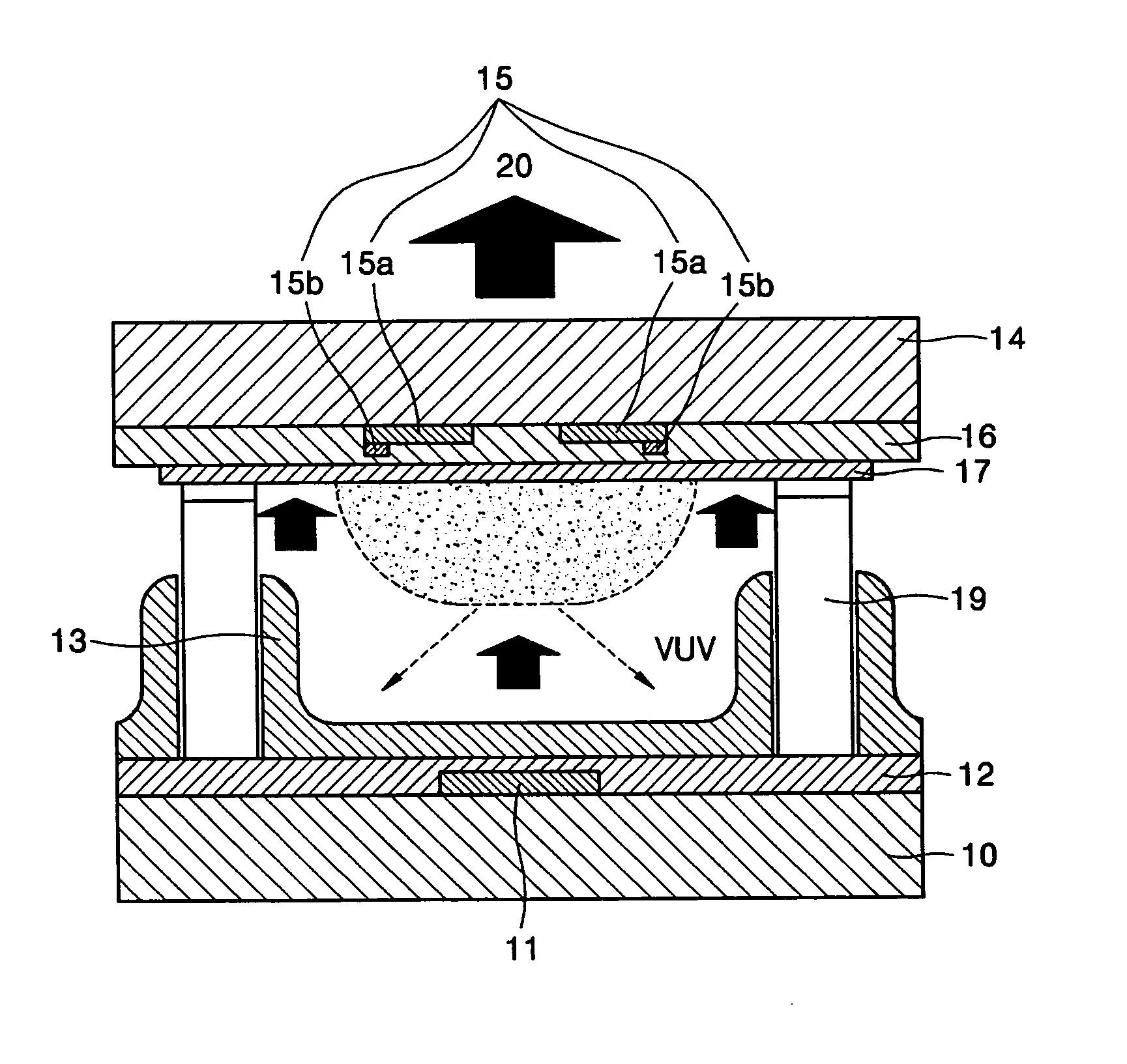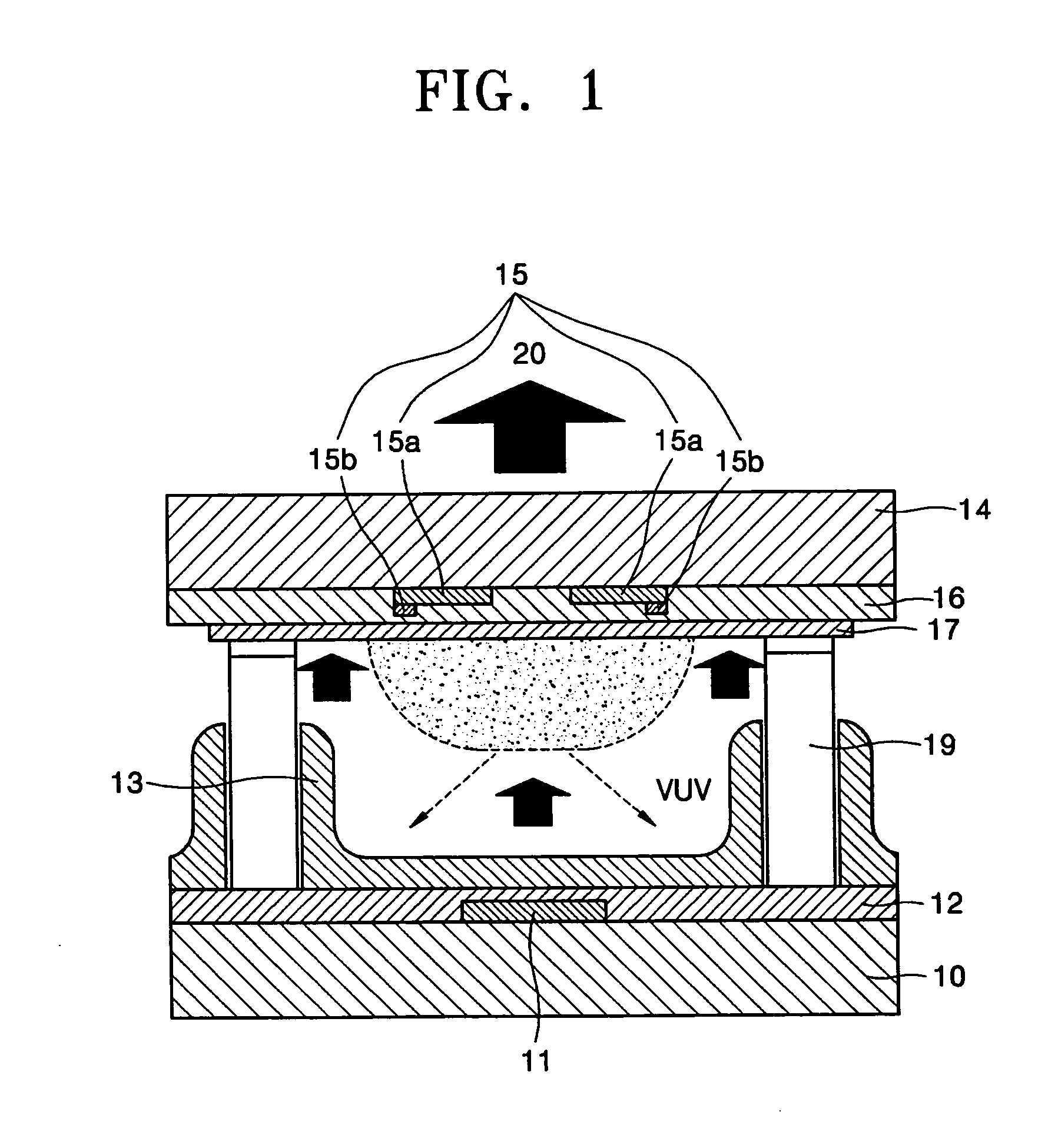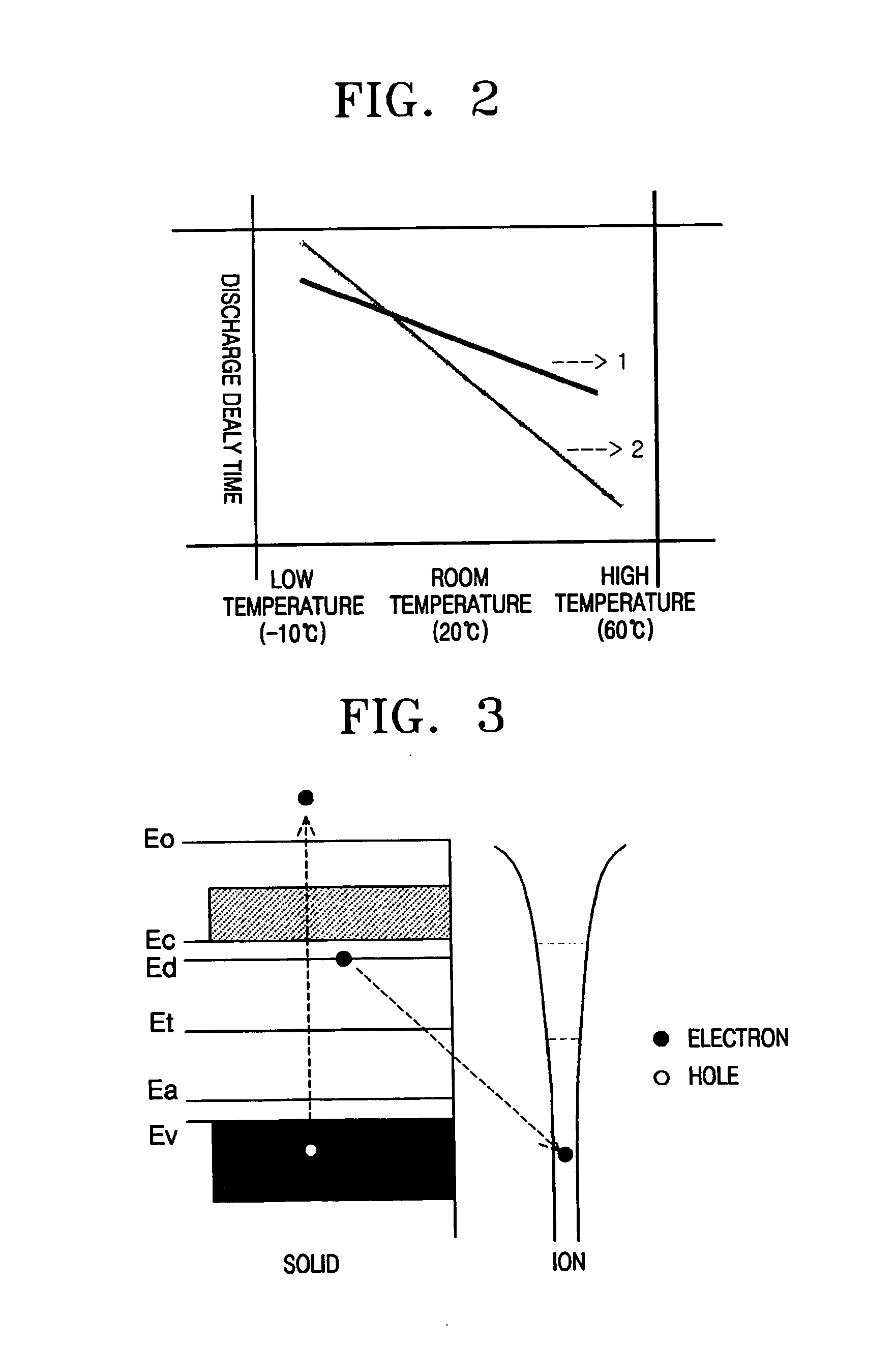Protecting layer, composite for forming the same, method of forming the protecting layer, plasma display panel comprising the protecting layer
a technology of protecting layer and composite, which is applied in the manufacture of electrode systems, cold cathode manufacturing, and discharge tube/lamp manufacturing. it can solve the problems of reducing the starting voltage of the discharge, the dielectric can be damaged by sputtering etching, and the difficulty of controlling the discharge current, so as to reduce the dependency of the discharge delay time on temperature, the effect of increasing the sputtering resistance and reducing the discharge delay tim
- Summary
- Abstract
- Description
- Claims
- Application Information
AI Technical Summary
Benefits of technology
Problems solved by technology
Method used
Image
Examples
manufacture example 1
[0076] Manufacture of Discharge Cell
[0077] MgO and Cu(NO3)2, of which amounts were controlled such that the amount of Cu was 5.0×10−5 g based on 1 g of the magnesium oxide, were mixed by stirring for 5 hours or greater in a mixer to produce a homogeneous mixture. MgF2 as a flux was added to the mixture, and the result was stirred and heat treated at 900° C. for 5 hours in a melting pot. The heat treated result was compressively molded in a form of a pellet, and heat treated at 1650° C. for 3 hours. As a result, a composite for forming a protecting layer, in which the amount of Cu was 5.0×10−5 g based on 1 g of the magnesium oxide, was prepared.
[0078] Meanwhile, an Ag electrode with a predetermined pattern was formed on a glass (PD 200 Glass) with a size of 22.5×35×3 mm. Subsequently, the Ag electrode was covered with a PbO glass to form a PbO dielectric layer with a thickness of about 30 μm to 40 μm. The composite for forming a protecting layer was deposited on the PbO dielectric ...
manufacture example 2
[0085] A discharge cell was produced in the same manner as in Manufacture Example 1, except that MgO and Cu(NO3)2, of which amounts were controlled such that the amount of Cu was 1.0×10−4 g based on 1 g of magnesium oxide, were mixed to form a composite for forming a protecting layer, and ultimately, a protecting layer, of which the amount of Cu was 1.0×10−4 g based on 1 g of the magnesium oxide (that is, the amount of Cu was 100 ppm based on 1 g of the magnesium oxide), was obtained. The discharge cell will be referred to Sample 2.
manufacture example 3
[0086] A discharge cell was produced in the same manner as in Manufacture Example 1, except that MgO and Cu(NO3)2, of which amounts were controlled such that the amount of Cu was 2.0×10−4 g based on 1 g of magnesium oxide, were mixed to form a composite for forming a protecting layer, and ultimately, a protecting layer, of which the amount of Cu was 2.0×10−4 g based on 1 g of the magnesium oxide (that is, the amount of Cu was 200 ppm based on 1 g of the magnesium oxide), was obtained. The discharge cell will be referred to Sample 3.
PUM
| Property | Measurement | Unit |
|---|---|---|
| weight | aaaaa | aaaaa |
| temperature | aaaaa | aaaaa |
| temperature | aaaaa | aaaaa |
Abstract
Description
Claims
Application Information
 Login to View More
Login to View More - R&D
- Intellectual Property
- Life Sciences
- Materials
- Tech Scout
- Unparalleled Data Quality
- Higher Quality Content
- 60% Fewer Hallucinations
Browse by: Latest US Patents, China's latest patents, Technical Efficacy Thesaurus, Application Domain, Technology Topic, Popular Technical Reports.
© 2025 PatSnap. All rights reserved.Legal|Privacy policy|Modern Slavery Act Transparency Statement|Sitemap|About US| Contact US: help@patsnap.com



